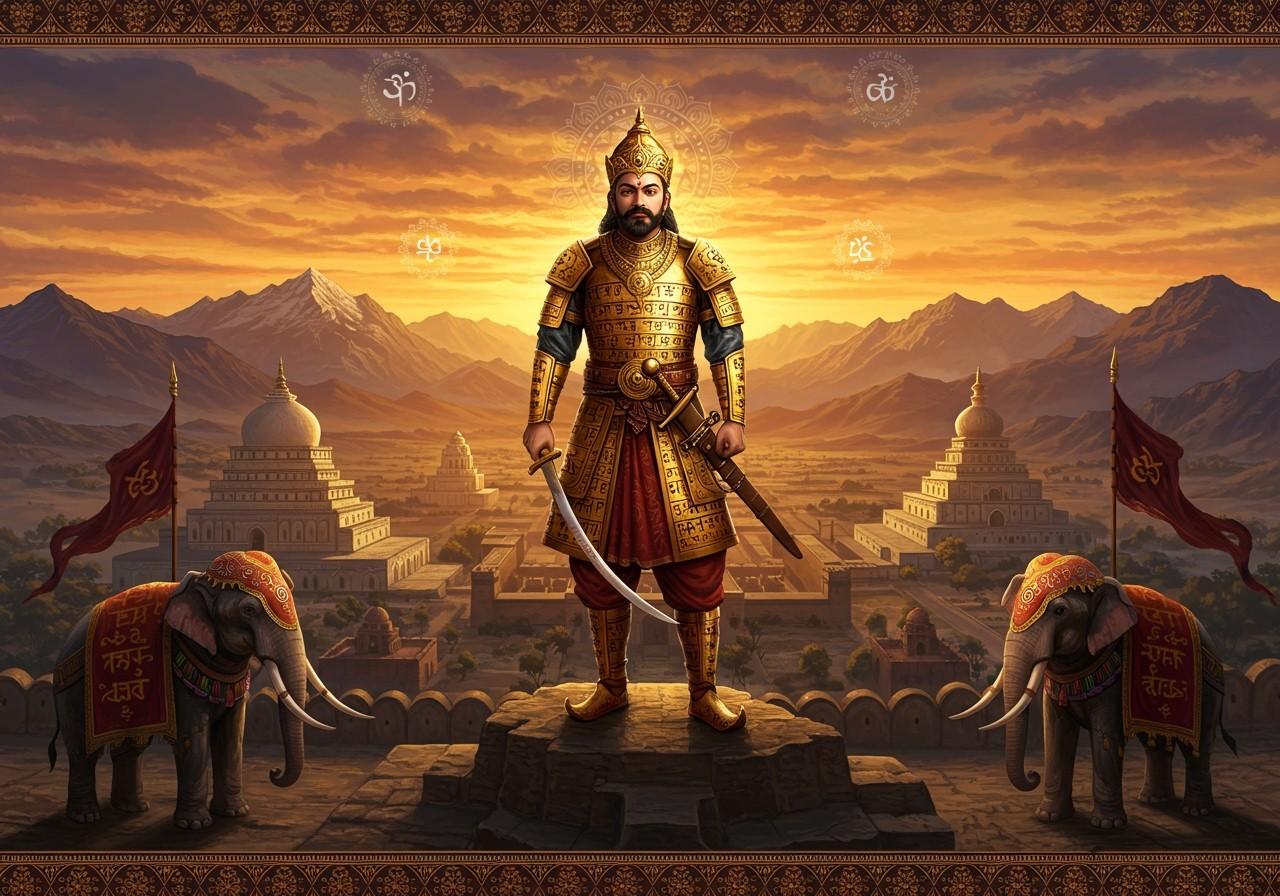
The Hindu Shahi Dynasty, reigning from 870 C.E. to 1015 C.E., holds a significant yet often overlooked place in Afghanistan’s history. Their influence resonated throughout the Kabul Valley, leaving a lasting impact on the region’s cultural and political landscape.
Historical Overview of the Hindu Shahi Dynasty
Emerging in the Kabul Valley, the Hindu Shahi Dynasty thrived between the 9th and 11th centuries C.E.. Founded by Kallar, the dynasty expanded its power under subsequent rulers. Kabul flourished as a cultural and economic center during this era, strategically important due to its location at the crossroads of empires. The Hindu Shahis expertly navigated the socio-political dynamics, interacting with the Abbasids and Samanids, to maintain their authority.
Cultural and Religious Impact of the Hindu Shahi Dynasty
The Hindu Shahi Dynasty significantly shaped the cultural landscape of the Kabul Valley. Hinduism thrived alongside Buddhism and indigenous beliefs, creating a rich tapestry of religious diversity. This harmonious coexistence fostered a unique blend of traditions.
The dynasty’s architectural prowess is evident in the temples and fortifications from this period. These structures display a fusion of Indian and Central Asian architectural styles, marked by intricate designs and skilled craftsmanship. Discoveries of deity images, particularly those of Durga, shed light on the spiritual practices of the time.
Religious tolerance was a hallmark of Hindu Shahi rule. The dynasty’s encouragement of cultural exchange allowed various faiths to flourish, demonstrating their progressive governance. Archaeological findings, including coins from the era, reveal a vibrant culture with extensive trade networks and influence, indicating economic prosperity.
Political and Military Accomplishments of the Hindu Shahi Dynasty
The Hindu Shahi rulers were astute military strategists and shrewd politicians. They fiercely defended their territories against external threats, demonstrating tactical skill in their interactions with Islamic caliphates.
The dynasty employed various military strategies, including forging alliances and strengthening fortifications, to maintain stability amidst regional conflicts. Their involvement in key battles solidified their position and shaped the political dynamics of the time. Their administrative system promoted prosperity and order, fostering a thriving society and facilitating trade with neighboring states.
Despite facing formidable adversaries like Mahmud of Ghazni, the Hindu Shahis displayed remarkable resilience. Their political and military legacy remains crucial to understanding the region’s history.
Decline and Enduring Legacy of the Hindu Shahis
The decline of the Hindu Shahi Dynasty was precipitated by internal conflicts and economic pressures. The rise of Mahmud of Ghazni posed a significant threat, leading to invasions that impacted the dynasty’s territories and cultural heritage. Despite their eventual downfall, the Hindu Shahis left a lasting influence on subsequent dynasties, with their cultural memory shaping historical narratives in Afghanistan and northern India.
How Poojn.in Honors the Hindu Shahi Dynasty’s Religious Heritage
The Hindu Shahi Dynasty’s presence in Afghanistan highlights the deep-rooted Hindu traditions that Poojn.in strives to preserve by offering authentic ritual items. Deities like Lord Shiva and Lord Brahma held prominent positions in the religious practices of the Hindu Shahi period, and their worship continues today.
Poojn.in provides essential puja items for these deities:
- Complete Puja Sets for Lord Shiva: These sets include a pure copper kalash, brass bells, dhoop/incense holders, and Rudraksha malas. They help maintain traditional worship practices while offering the convenience of online shopping. Explore our collection of Shiva puja items at Lord Shiva Murti, Standing Shiva Murti, and Ganga Shiva Murti.
- Traditional Items for Lord Brahma Prayers: We offer brass diyas, sandalwood powder, cotton wicks, and pure ghee in copper containers. These items are carefully selected to meet traditional specifications. Find these and other Brahma puja essentials on our website.
To delve deeper into the religious practices of the Hindu Shahi Dynasty, explore our detailed guides on Lord Shiva and Lord Brahma: Lord Shiva and Lord Brahma.
Reflecting on the Hindu Shahi Legacy
The Hindu Shahi Dynasty, known for its vibrant culture, strategic brilliance, and harmonious coexistence, remains a significant chapter in history. Their legacy of religious tolerance, architectural achievements, and political acumen continues to inspire. Though their reign faced challenges and eventual decline, their contribution to the region’s cultural and political landscape is undeniable.
Frequently Asked Questions about the Hindu Shahi Dynasty
What defined the Hindu Shahi Dynasty? The Hindu Shahi Dynasty was a powerful force in early medieval Afghanistan and parts of Pakistan (870-1015 C.E.), renowned for their resistance against invasions and their promotion of Hindu culture.
Where was this dynasty located? Their domain primarily encompassed Afghanistan and parts of modern-day Pakistan, centered around Kabul and Ghazni.
Why is their legacy often overlooked? Their story is often overshadowed by the subsequent Islamic empires in the region, leading to a lack of widespread recognition for their cultural and architectural contributions.
How did they influence Afghanistan’s history? The Hindu Shahis played a crucial role in safeguarding the region from invasions and preserving Hindu traditions during their rule.
What factors contributed to their decline? Ongoing invasions by Islamic forces ultimately led to their downfall and the rise of Islam in the region.
Who were some prominent rulers? Key figures include Jayapala and Anandapala, known for their staunch resistance against invaders.
What were their key cultural contributions? The Hindu Shahis enriched art, architecture, and literature, building temples and fostering Hindu practices in the region.
How is their legacy remembered today? Their bravery and dedication to upholding Hindu culture in a challenging historical context are remembered and studied by historians and scholars.
Explore related articles on Hinduism and its history at Poojn.in: Hinduism’s Global Reach, Hinduism: A Complete History and Origin, and Hinduism: A Concise History.


